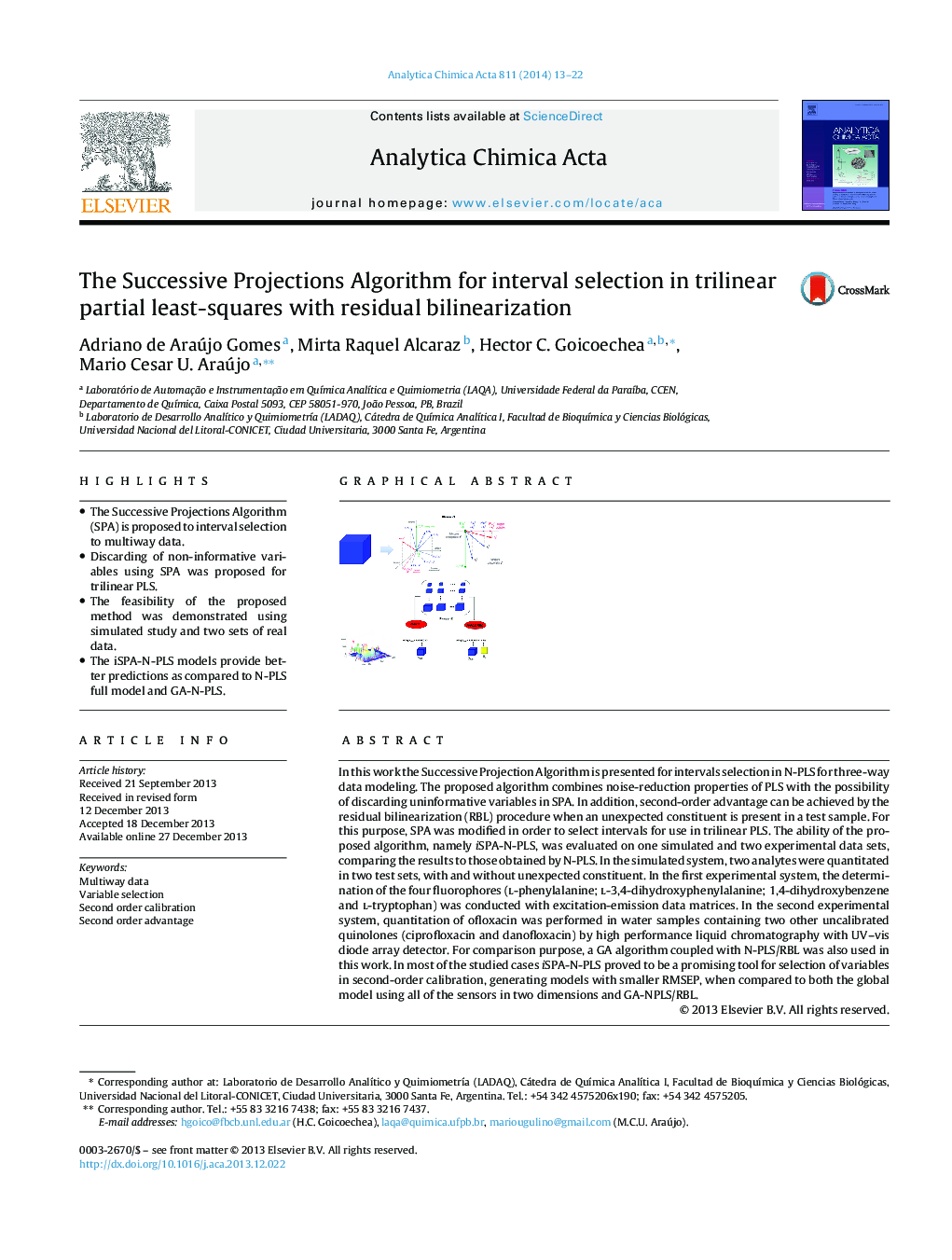| Article ID | Journal | Published Year | Pages | File Type |
|---|---|---|---|---|
| 1164391 | Analytica Chimica Acta | 2014 | 10 Pages |
•The Successive Projections Algorithm (SPA) is proposed to interval selection to multiway data.•Discarding of non-informative variables using SPA was proposed for trilinear PLS.•The feasibility of the proposed method was demonstrated using simulated study and two sets of real data.•The iSPA-N-PLS models provide better predictions as compared to N-PLS full model and GA-N-PLS.
In this work the Successive Projection Algorithm is presented for intervals selection in N-PLS for three-way data modeling. The proposed algorithm combines noise-reduction properties of PLS with the possibility of discarding uninformative variables in SPA. In addition, second-order advantage can be achieved by the residual bilinearization (RBL) procedure when an unexpected constituent is present in a test sample. For this purpose, SPA was modified in order to select intervals for use in trilinear PLS. The ability of the proposed algorithm, namely iSPA-N-PLS, was evaluated on one simulated and two experimental data sets, comparing the results to those obtained by N-PLS. In the simulated system, two analytes were quantitated in two test sets, with and without unexpected constituent. In the first experimental system, the determination of the four fluorophores (l-phenylalanine; l-3,4-dihydroxyphenylalanine; 1,4-dihydroxybenzene and l-tryptophan) was conducted with excitation-emission data matrices. In the second experimental system, quantitation of ofloxacin was performed in water samples containing two other uncalibrated quinolones (ciprofloxacin and danofloxacin) by high performance liquid chromatography with UV–vis diode array detector. For comparison purpose, a GA algorithm coupled with N-PLS/RBL was also used in this work. In most of the studied cases iSPA-N-PLS proved to be a promising tool for selection of variables in second-order calibration, generating models with smaller RMSEP, when compared to both the global model using all of the sensors in two dimensions and GA-NPLS/RBL.
Graphical abstractFigure optionsDownload full-size imageDownload as PowerPoint slide
